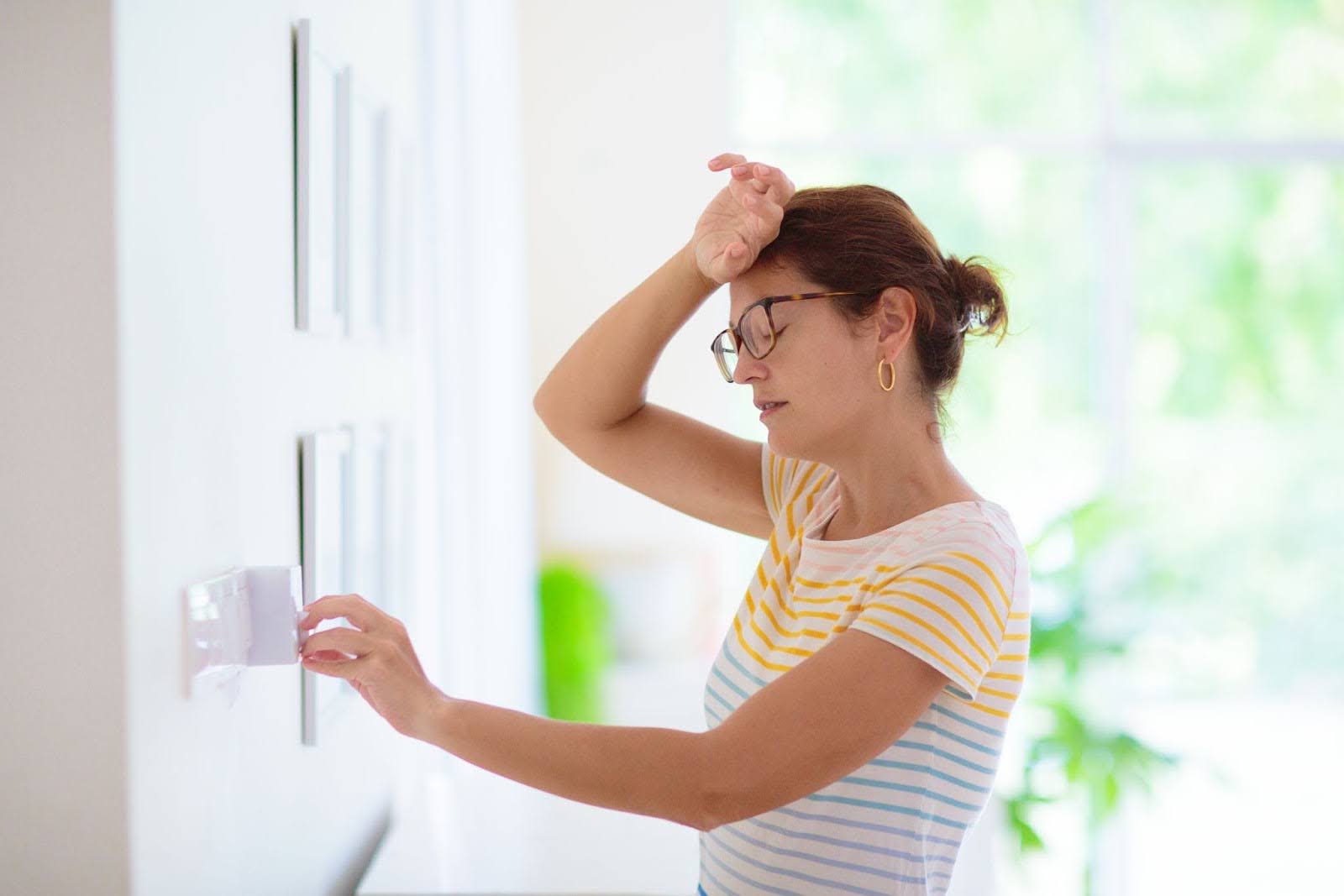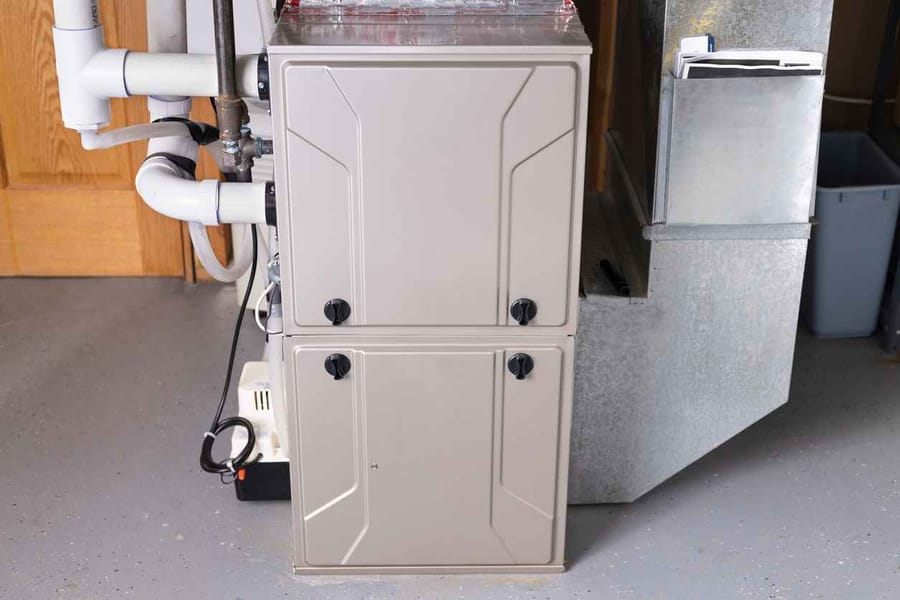5.0 Rated on Google
Your AC Isn’t Blowing Cold Air: How to Fix It ASAP!

When your AC isn’t blowing cold air, it can feel like you’re trapped inside an oven, especially in the peak of summer. High temperatures and rising humidity levels can quickly impact your comfort, health, and even your electronics. Whether your central air is blowing warm air or your home AC is not cooling enough, you need answers — and fast.
Unfortunately, it isn’t always easy to tell what’s wrong with your air conditioner — or why it costs so much to fix an AC unit. That’s why our AC repair professionals are here to help! Let’s walk through the most common reasons why your AC is blowing hot air instead of keeping your home cool, along with easy-to-follow troubleshooting steps.
Common Causes of a Malfunctioning AC
Low Refrigerant Levels
One of the most common reasons an AC is not blowing cold air is low refrigerant levels. Refrigerant is a chemical that absorbs heat from inside your home and releases it outside, cooling the air in the process. In other words, it’s the lifeblood of your AC. If your system has a leak, the refrigerant level drops, and your AC can’t perform its job. Signs of low refrigerant include poor airflow, warm air, bubbling or hissing noises, and ice buildup on the evaporator coil or refrigerant lines.
Solution: Only licensed professionals can legally handle refrigerant. Contact a certified technician to inspect for leaks, seal them, and recharge your system.
Note that continuing to run a system low on refrigerant may burn out the compressor, which is one of the most expensive components to replace. So, if you suspect that your AC’s refrigerant levels are low, contact Stay Cool Climate Control to have a professional technician check and repair any leaks and refill your refrigerant levels to the appropriate level. (See also: what refrigerant does my AC use?)
Dirty Air Filter
A clogged air filter is one of the most overlooked causes of a poorly functioning AC system. When it’s coated in dust, dirt, and debris, it blocks airflow, traps moisture, and can allow mold or mildew to form. A dirty filter also causes your system to overwork, increasing electricity usage and shortening the life of your furnace, air handler, and even your ductwork.
Solution: To fix this issue, simply clean or replace your air filter. Check your air filter every 1-2 months and replace it if it appears dirty or clogged. During allergy season or when humidity is high, change filters more frequently. It’s an easy and affordable way to protect your system’s efficiency and your indoor air quality. Our O’Fallon HVAC specialists can also help with this. (Also, check out our piece on AC maintenance tips for summer!)
Faulty Compressor
Whether you have a heat pump, a ductless mini-split, or a traditional central AC unit, the compressor is an important component of your AC system that is responsible for compressing the refrigerant and circulating it through the system. If your compressor is faulty, it can cause your AC to blow warm or no air. Faulty capacitors and blown fuses can also prevent the compressor from starting, while a tripped circuit breaker may stop power flow altogether.
A faulty compressor can be caused by a variety of issues, including electrical problems, damaged wires, or excessive wear. If you suspect that your compressor is faulty, contact Stay Cool Climate Control to have a professional technician diagnose and fix the issue.
Solution: If your system won’t start — or cycles on and off irregularly — you’ll want a professional diagnosis. Don’t attempt to replace fuses or capacitors yourself; they store electricity and can be dangerous without proper tools.
Thermostat Issues
If your AC is not blowing cold air, it could be an issue with your thermostat. Your thermostat is responsible for controlling your home’s temperature and communicating with your AC system to turn it on and off.
Solution: Set your thermostat to “Cool,” and make sure the set temp is lower than the current room temperature. Finally, try replacing the batteries. If the thermostat appears to be functioning correctly, but you’re still getting warm air from your vents, it could be an issue with the wiring or other internal components. Contact Stay Cool Climate Control to have a professional technician diagnose and fix the issue.
Frozen Evaporator Coils
Restricted airflow or low refrigerant can cause your evaporator coil to freeze. When this happens, the system can’t absorb heat effectively, resulting in your AC blowing hot or no air at all. You may even see frost forming on the indoor unit or notice water dripping as it thaws.
Solution: Turn off your system and let the coil thaw naturally. Don’t chip away at the ice — it could damage the delicate metal. Once it’s thawed, address the root issue: dirty filters, blocked ducts, or refrigerant loss.
Electrical or Mechanical Wear and Tear
Your AC has many parts working in harmony — fans, motors, belts, switches, wires, and more. Over time, natural wear and tear can reduce efficiency, create noise, and make your air conditioner not cool like it used to. A faulty blower motor or fan relay may even stop the unit from blowing air altogether.
Solution: An annual inspection can detect early signs of mechanical wear. It’s cheaper to replace worn-out parts than risk a full system breakdown during a heatwave.
Oversized or Undersized AC System
If your system was poorly sized for your home, it may short-cycle or struggle to maintain even temperature. That’s especially true in multi-story homes or ones with finished basements or open attic spaces. An oversized unit may cool rooms quickly but fail to remove humidity, leaving you feeling sticky and uncomfortable.
Solution: Have a technician perform a load calculation. If replacement is needed, newer units are far more energy-efficient, come with stronger warranties, and often qualify for rebates.
Get Help for AC Issues Today!
If your AC is running but not cooling, you shouldn’t wait to get help. Letting problems go unresolved can increase your costs, damage your system, and decrease indoor comfort. And remember that an AC blowing warm air is often a sign of something fixable — but only if you act fast.
From tripped breakers to malfunctioning switches and clogged ducts, we’ve seen it all. So, if you are experiencing any of these problems, contact Stay Cool Climate Control to have a professional technician diagnose and fix the issue. We bring the tools, the trucks, and the know-how to get your home cool again — quickly and affordably!


